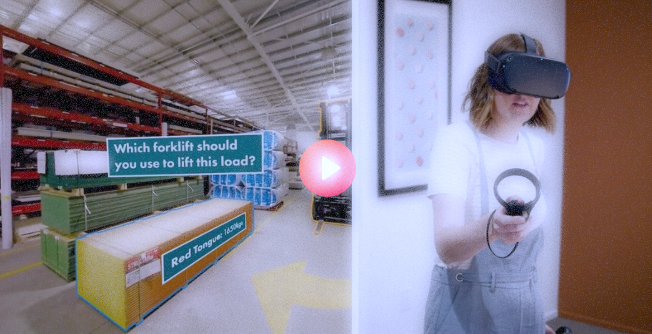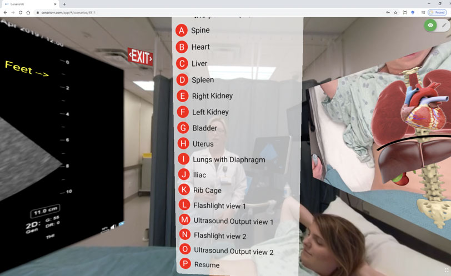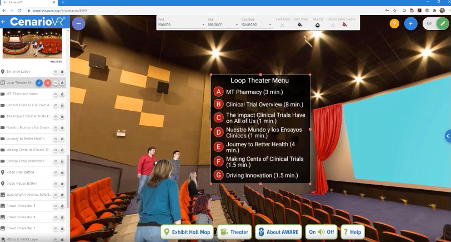At a time when live events are being cancelled, and social distancing and lockdowns are being enforced – we are beginning to contemplate a world that is at the very least – touch-free.
Josh Bersin’s 3 Phases of Response to COVID-19 points to the steps business needs to take to urgently respond in an increasingly touchless world, and the explosion of virtual and augmented reality.
Perhaps VR training is actually coming into its own during the COVID-19 pandemic.
Is Touch And Proximity The New Workplace Risk?
While 2020 has made remote working commonplace for many, a fundamental shift in our daily working practices has been accelerated. Along with it, the need for constant sanitising of surfaces, while workspace reconfigurations are workplace mandates.
The Australian government recently issued a National COVID-19 Safe Workplace Principles, which states that “all workers, regardless of their occupation or how they are engaged, have the right to a healthy and safe working environment.
What does this mean for businesses, and what are the ‘new compliance’ implications?
Firstly, safety precautions must be taken, and that includes training and other scenarios, as companies may be held liable for Coronavirus outbreaks in their premises – similar to how they are held accountable for any health and safety violations at work.
To that end, businesses are increasingly looking to new and innovative ways to embrace remote working practices to help recruit, retain and upskill the best talent, streamline processes and enhance productivity.
Secondly, certain technologies which previously may have been overlooked, have emerged as central to driving this change.
Apart from the obvious video conferencing players like Zoom, some aspirational immersive technologies that until now were on the wish-list, are ‘zooming’ to the top – including Virtual Reality.
These tools provide a sense of connection that can’t otherwise be achieved without contravening social distancing or lockdown rules.
VR offers distinct advantages for businesses who are seeing this time as an opportunity to develop their team, as well as those who need to train, upskill or reskill.
Immersive Learning: Cost-Effective and Safe
The advantages of learning in the VR environment are well documented:
- A deeper, more memorable learning experience
- Better recall by boosting engagement and retention
- Safety for dangerous, high risk or expensive training scenarios
Many organisations are realising not only the effectiveness and safety advantages of VR, but cost savings as well.
Case study: Vanderbilt University School of Nursing
In a recent case study of Vanderbilt University School of Nursing, where patient safety is a strong focus – school administrators faced a challenge: Reduce the equipment cost and hands-on, complex nature of point of care ultrasound training.
Using CenarioVR a virtual reality course authoring application, the clinical setting was replicated in VR.
A series of video scenarios enhanced with additional instructional elements were created. Questions, annotations, buttons, hotspots and quizzes enforced and tested key concepts.
By preloading much of the instruction into an immersive format using CenaroVR, the need for face-to-face instruction and time spent physically touching the equipment was substantially reduced, with an added benefit of scale – allowing more people to be trained.
Ultimately, enrolment for its ultrasound training program was boosted, without the need to purchase five new ultrasound machines – saving over $425,000.
Live Events Cancelled?
If your organisation depends on live events to deliver learning experiences, right now you will be contemplating how you can bring those to life in an engaging way, and perhaps even explore upsides and opportunities that technology solutions might offer.
The bottom line, is that when cancellations seem inevitable, think again.
Case Study: CISCRP
This was the challenge to clinical research firm CISCRP who produce a series of clinical educational events around the world per year – including to high-risk/vulnerable audiences.
It was essential to find a solution that could quickly, cost-effectively and safely bring the event to life for sponsors, exhibitors and attendees alike.
Tasked with rapid development, and only five weeks from conception to launch – producer Illumina Interactive Learning transformed their on-site conference into a ‘live’ event in VR.
Using CenarioVR, they leveraged eLearning Brothers’ stock assets, including the use of avatars, 360º images and videos – along with hotspots to keep the program interactive and flowing.
The entire project was edited in CenarioVR’s powerful production suite.
Using CenarioVR, Illumina created a virtual alternative that felt real, and earned high marks from the over 30 exhibitors and 350 attendees alike.
In fact, the virtual solution was so successful that it drove an increase in exhibitor signups for the next virtual event.
See the case study video here.
A Technological Inflection Point
As COVID-safe environments require businesses to take active steps to ensure the rights of workers to a healthy and safe working environment, implementing technologies such as VR could become a need-to-have in your eLearning toolkit.
With this in mind, it appears that tools like VR might just be one of the key tools to help businesses comply with Australia’s National COVID-19 Safe Workplace Principles, as the pandemic demands a uniquely focused approach to workplace health and safety (WHS).
And with learning in the virtual environment proven to lead to better recall by boosting engagement – and retention by 80% – it’s also one of the most efficient and cost-effective training tools on the market.
We think that’s a trifecta worth exploring.
So, for inspiration, check out these global use cases – along with detailed, results-based case studies of CenarioVR success stories in a variety of relevant L&D scenarios, from organisations around the world.
Contact the ITC Learning team to discuss VR opportunities for your organisation.


